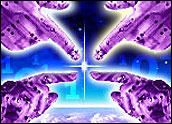
Erik Brynjolfsson and Andrew McAfee of the MIT Center for Digital Business and the Sloan School of Management have written an interesting book for our times — our economic times — with an appealing metaphor that any technologist will appreciate.
Race Against The Machine: How the Digital Revolution is Accelerating Innovation, Driving Productivity, and Irreversibly Transforming Employment and the Economy, is short and to the point. The book ought to be required reading.
The subject matter is employment growth, or the lack thereof in this rather austere recovery, and the effect on future jobs and growth. More specifically, it is about the changing relationship between humans and their creation, the computer — the almost-thinking machine — and how it can outcompete its masters not only in routine manufacturing tasks but, increasingly, in jobs that were once thought to be the exclusive province of human thinking.
The metaphor from futurist Ray Kurzweil holds the narrative together and is worth pondering before we continue.
How About a Nice Game of Chess?
It is told in the form of a story about the invention of chess. The emperor, the story goes, was so delighted with the game that he gave its inventor a wish. The sly inventor asked for a grain of rice to be placed on one square of the chessboard , two on the second, and double the prior square’s total on each succeeding square.
It is the story of exponential growth. Accumulating the sums of rice on the first half of the chessboard was manageable, but the second half totals were truly significant. From small beginnings arose a mountain of rice that would dwarf Mr. Everest.
McAfee and Brynjolfsson apply Kurzweil’s story to another runaway exponential progression, Moore’s Law. You may not need to be reminded that microchip pioneer Gordon Moore suggested that computing power would double, and its cost would halve, about every two years. With some fine-tuning, the period was cut to 18 months. That has continued for virtually the lives of most people in the technology industry today.
However, that’s not the crucial part of the story or the book. The authors calculate that we have only recently crossed over from the first 32 squares of the chessboard into the second half, where a metaphorical Everest awaits us.
The Race is Already Over
The gains in the second half of the chessboard will likely come from advanced software and algorithms rather than hardware. They point out that while computing power has increased one thousand fold on the first half of the chessboard, the power and quality of our algorithms has increased 43,000 fold.
The chessboard’s second half is already giving us computer systems that can diagnose maladies better than doctors, out-lawyer lawyers and, of course, kick booty in Jeopardy!
What will happen next?
McAfee and Brynjolfsson are quick to point out that the thinking that machines do is not the thinking of humans. It is often the lightning-fast, brute-force effort of crunching a great deal of data to ferret out an answer. Also, training a machine to pick up a pencil from a random table top, let alone use it, is still elusive.
The major point of Race Against the Machine is that there really is no race. If you think there is, be prepared to lose. The book, however, is fundamentally hopeful because it suggests that machines are tools that can help people offload rote tasks to concentrate on the creative, entrepreneurial and innovative endeavors in which only humans can engage.
What’s powerful about this argument is that it offers a prescription for a solution: Leverage the machine rather than fight it. Crunch big data in every way you can imagine. Ask “what if” questions ad nauseum. Above all, innovate.
As I look at CRM and the broader technology world, it seems to me that the subdivided chessboard is visible everywhere. What we once called innovation was at one time indeed innovative, but it was really no more than automation of what existed before.
True innovation starts on chessboard square 33, where we realize that all the automation is mostly behind us and innovation means totally new concepts.
McAfee and Brynjolfsson speculate that we reached square 33 in the middle of the last decade. If true, one of the first true innovations we all witnessed was the social media revolution. Combined with the mobile revolution and today’s quest to master Big Data, we have a potent nucleus on which to invent new businesses, models, and processes.
If we combine what we know about the chessboard — and where we are on it — with what we know about our industry, we can clearly see that some vendors are simply automating on the first half of the board, while others are innovating on the second half.
Let’s not fool ourselves — simply innovating on the second half of the chessboard is no guarantee of success. As always, bad ideas will still yield bad results. It is also true, however, that failing to try — to even enter the second half of the board — is a sure route to oblivion.
This is not simply a matter for the tech sector or even the nation. It’s a large-scale economic issue that will affect our species.
Historians and others often debate when specific eras start because they don’t often follow calendars and precise dates. For instance, some people claim that the 20th century started in 1890 with the closing of the American frontier.
With this as a guide, and McAfee and Brynjolfsson’s fine, short book as context, I’d say the 21st century started in about 2006.






















































Social CRM
See all Social CRM